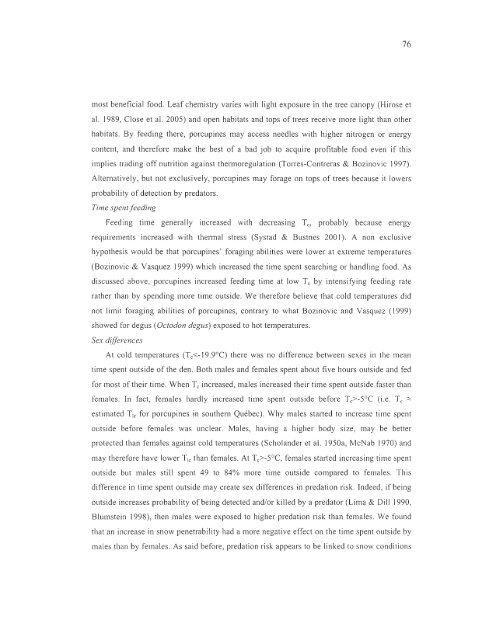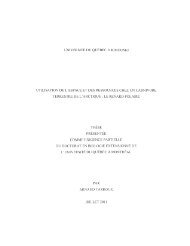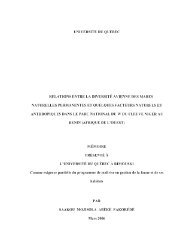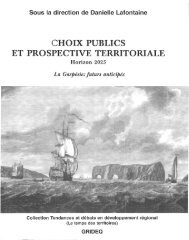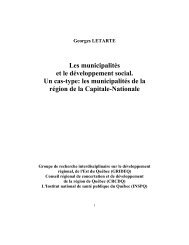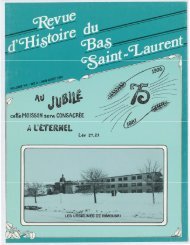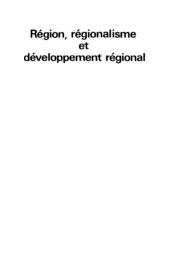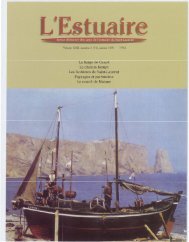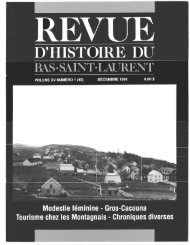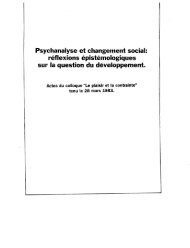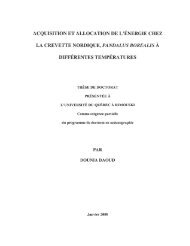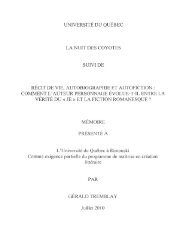influence du climat et de la prédation sur l'utilisation de l'habitat et la ...
influence du climat et de la prédation sur l'utilisation de l'habitat et la ...
influence du climat et de la prédation sur l'utilisation de l'habitat et la ...
Create successful ePaper yourself
Turn your PDF publications into a flip-book with our unique Google optimized e-Paper software.
76<br />
most beneficial food. Leaf chemistry varies with light expo<strong>sur</strong>e in the tree canopy (Hirose <strong>et</strong><br />
a l. 1989, Close <strong>et</strong> al. 2005) and open habitats and tops of trees receive more light than other<br />
habitats. By feeding there, porcupines may access needles with higher nitrogen or energy<br />
content, and therefore make the best of a bad job to acquire profitable food ev en if this<br />
implies trading off nutrition against thermoregu<strong>la</strong>tion (Torres-Contreras & Bozinovic 1997).<br />
Alternatively, but not exclusively, porcupines may forage on tops of trees because it lowers<br />
probability of d<strong>et</strong>ection by predators.<br />
Time spenl f eeding<br />
Feeding time generally increased with <strong>de</strong>creasing Tc, probably because energy<br />
requirements increased with thennal stress (Systad & Bustnes 2001). A non exclusive<br />
hypothesis would be that porcupines' foraging abilities were lower at extreme temperatures<br />
(Bozinovic & Vasquez 1999) which increased the time spent sem'ching or handling food. As<br />
discussed above, porcupines increased feeding time at low Tc by intensifying feeding rate<br />
rather than by spending more time outsi<strong>de</strong>. We therefore believe that cold temperatures did<br />
not limit foraging abilities of porcupines, contrary to what Bozinovic and Vasquez (1999)<br />
showed for <strong>de</strong>gus (Oelodon <strong>de</strong>gus) exposed to hot temperatures.<br />
Sex differenees<br />
At cold temperatures (Tc-5°C (i .e. Tc :::::;<br />
estimated Tic for porcupines in southern Québec). Why males started to increase time spent<br />
outsi<strong>de</strong> before females was unclear. Males, having a higher body size, may be b<strong>et</strong>ter<br />
protected than females against cold temperatures (Scho<strong>la</strong>n<strong>de</strong>r <strong>et</strong> al. 1950a, McNab 1970) and<br />
may therefore have lower Tic than females. At Tc>-5°C, females stmted increasing time spent<br />
outsi<strong>de</strong> but males still spent 49 to 84% more time outsi<strong>de</strong> compared to females. This<br />
difference in time spent outsi<strong>de</strong> may create sex differences in predation risk. ln<strong>de</strong>ed, if being<br />
outsi<strong>de</strong> increases probabil ity of being d<strong>et</strong>ected and/or killed by a predator (Lima & Dili 1990,<br />
Blumstein 1998), then males were exposed to higher predation risk than females. We found<br />
that an increase in snow pen<strong>et</strong>rability had a more negative effect on the time spent outsi<strong>de</strong> by<br />
males than by females. As said before, predation risk appears to be linked to snow conditions


